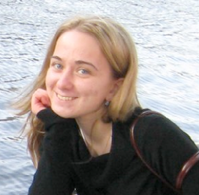Variational approaches to water wave simulations
Promotion date: October 3.
Promotor: Prof. dr. ir. Jaap van der Vegt and Prof. dr. Onno Bokhove
| Water wave modeling using a variational framework was studied in this thesis. In particular the focus is on a new model, based on the work of Cotter and Bokhove, which includes accurate dispersion, and incorporates the vertical component of vorticity and breaking waves modeled as bores. The Hamiltonian structure of the new water wave model was derived. A novel approach to find jump conditions at a bore was presented.
An innovative variational approach to derive a class of symplectic time integrators was developed. Following this approach it is possible to obtain known time integrators as well as some new integrators of second and third order. A second order accurate variational finite element method for the nonlinear potential flow water wave equations was developed. An important aspect is that the free surface and wave maker motion, changes the computational domain each time step. A detailed validation using experimental wave tank data demonstrated the excellent capabilities of the numerical method to simulate realistic wave experiments. In particular, wave focusing was simulated accurately, catching both the location and time when a freak wave occurred in the experiment. The results for an uneven bottom and irregular waves were also found to be excellent. These results provide a suitable basis for the extension of the method to the modeling of fast moving ships.
Also a novel third order symplectic time integrator for a water wave problem was implemented. A long time calculation revealed no energy or amplitude decay. Thus it is shown that the model provides an adequate base for further usage of the third order time integrator for more complicated water wave problems. |
What was the main purpose of your research project?
Various wave kinds are of potential danger to coastal or offshore structures. Stormy waves can harm ships, as well as platforms and buildings located near the shore. So-called rogue waves (also called freak waves) are the waves that have a height twice bigger than a significant wave height. It is a rare event, which is nevertheless more frequent in some parts of the Earth, for example the North Sea. Due to its size, some rogue waves pose a great danger.
Instead of looking for the exact causes of these events, we tried to reproduce data from experiments, performed at the Maritime Research Institute Netherlands (Marin), within a new numerical simulation model.
The results of these findings can be used in future on several areas: from engineering fast moving ships in coastal zones more robustly, unto policy advice for coastal areas to protect them against stormy waves. Instead of performing complex experiments, now advanced coastal maritime systems can be simulated on a short term notice, leading to valuable input in design and policy processes.
I am very happy the work is taken further within the Numerical Analysis and Computational Mechanics Group by a new PhD student. On this project he will, like me, collaborate with Marin Wageningen. The project was sponsored by STW and the NWO Institute.
In what sense did you develop as a scientist and researcher?
I came into contact and learned to work with various new numerical methods and mathematical models. Also I am grateful the University of Twente offered plenty of courses enabling me to develop my language and writing skills. These were very important for my personal development.
In what magazines and journals did you publish your findings?
Articles appeared in the Journal of Computational Physics, in the Journal of Nonlinear Processes in Geophysics, and in Environmental Fluid Mechanics Journal. Also an article appeared in the Dutch popular science magazine: het Nederlandse tijdschrift voor Natuurkunde.
What are your future plans?
I am applying for a job in Germany, preferably at a post-doc position. I would like to work as an independent researcher on a topic that appeals to me. The keywords for my new position will be numerical analyzes and computational physics. These can be applied to various topics and processes.
Did you feel part of the Mesa+ institute while working on your PhD project?
Most of my contacts were with the colleagues working at my own Group. We collaborated closely with the Physics of Fluids Group, led by Professor Deveraj van der Meer. We built some experiments and validated several simulation methods. On this I collaborated mainly with Dr. Anthony Thornton.

